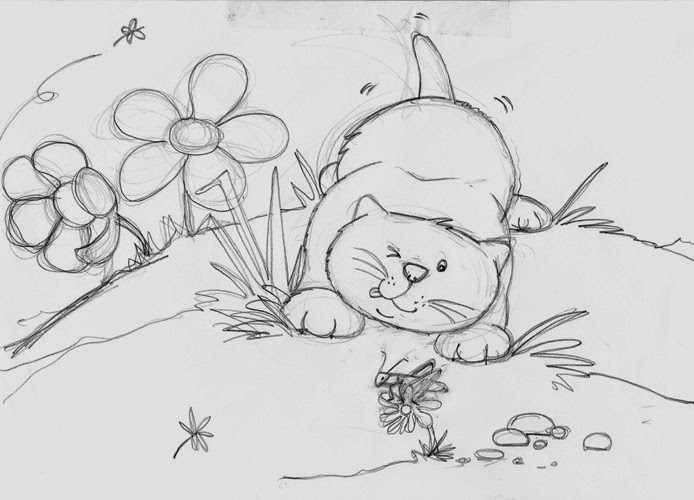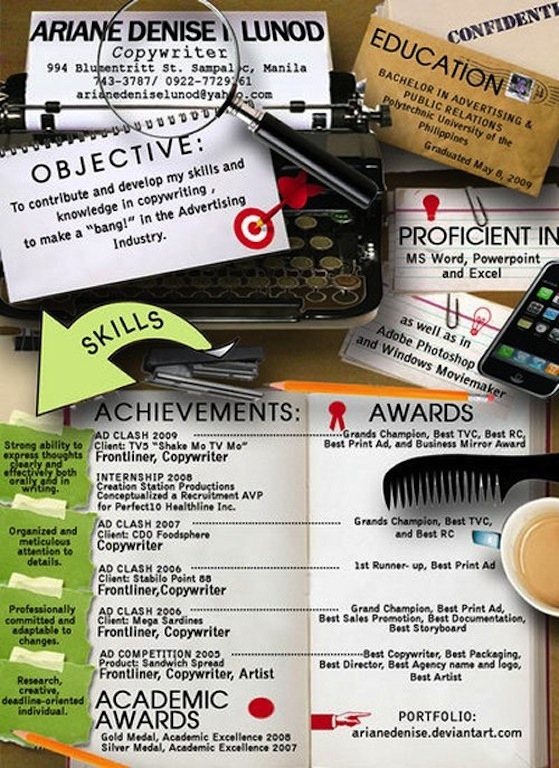Originally this piece on Stow on the Wold was meant to be published in the May issue of Cotswold Life, which would have been out mid April, but the advertising team asked if it could be held for June. It gave me a little longer to try out some techniques for one of the illustrations I wanted to get done - concerning St. Edward. Stow on the Wold is the highest town in the Cotswolds and this quote (which has no source) is often used to describe it:
Stow on the Wold, where the winds blow cold and the cooks can't roast their dinners
Last year when I visited it was snowing, and this time although the sun was out there was a bitter chill, so I couldn't resist using my humour in one of my illustrations.
This is the text from my feature to which this illustration relates.
There is a saying of Stow that as it is the highest town of the Cotswolds, it is a few degrees colder than elsewhere. On my last visit it was snowing, and today, although the sun is out, the air is chilly and I struggle to sketch the wonderful architecture and landmarks without shivering. I can’t resist adding some woollen accessories to my drawing of St. Edward who looks exposed to the elements as he looks down from his namesake town hall at the busy market area and The Cross below. Windows don’t appear straight in places and buildings are wonderfully old which add to Stow’s charm.
 |
| St.Edward's Chill. Graphite with free-hand embroidered stitch, Tracy Spiers |
The other illustration I did was directly from my sketchbook, which I took back home and worked on of Stow's Market Cross.
 |
| original sketch on site of The Cross in Market Square, Stow in pen and wash |
 |
final image for publishing purposes
The Cross, Market Square, Stow |
 |
| An archway alongside St Edward's Church, Stow which I chose not to finish and include |
THE TEXT which the illustrations accompany
My
dad can’t quite believe it. He is watching his daughter batting with the bat of
all bats – the very one belonging to William Gilbert Grace, or W.G.Grace,
considered by many historians as the greatest cricketer of all time. If we had
arrived in Stow on the Wold a few minutes earlier Dad would have been the 4,000
visitor to have been to the town’s Cotswold Cricket Museum - believed to be the
only one of its kind.
Minutes
before I ask owner Andy Collier, “why cricket?” Immediately I realise it is a
rather silly question to put to such an enthusiast. Before I can take back my
words, a gentleman on the next table to me in Grace Tea and Coffee Lounge –
part of the museum complex – replies: “And why not?”
Why
not indeed? After all no one else has taken their private collection of cricket
memorabilia – built up over 25 years - and turned it into a public attraction
like this.
“It’s
been the love of my life all my life. It started when I did an exhibition in
Guildford two years ago and we raised £900 for charity over one weekend. Those
who came were so gobsmacked by what they saw, it encouraged me to do something
with it,” recalls Andy, who moved to Stow with his wife Marian when they saw
the ideal building for their museum and café venture.
“When
we first opened, a lot of people thought it was a crazy idea. Why would you
want a cricket museum in Stow? But it
has received such an enormous amount of interest and as a result the collection
is growing.”
My
Dad has certainly been bowled over and I leave him talking to Andy.
Incidentally
Andy and Marian have helped bring more visitors to Brewery Yard in Sheep
Street, not only for their enterprise, but because they are now the focal point
for Stow Info, the town’s Tourist Information Centre. Go Stow, an independently
run visitor’s centre run by Sue and Walter Hasler, closed down last January,
due to lack of financial support from local authorities.
“By
having the tourist information point here means it brings people over to this
part of Stow, and although the market square is the main hub of the town, it is
making this a busier place,” admits Andy.
It
is this main reason that Jill Lawrence opened up Vivant in Brewery Yard at the
end of October. Her attractive light and airy shop is what this French name
suggests – it’s alive with colour and vibrancy. Full of hand-made arts and
crafts displaying a range of unique workmanship, the gallery-like setting acts
as a showcase and market place for artists all over the country as well as for Jill’s
own beautiful exquisite jewellery.
“I
left a busy and demanding career behind me and with amazing support from my
partner Steve, we have been able to focus full-time on this business. It is
very satisfying to think that making something can give a bit of pleasure to
someone else. I am very excited about
all the wonderful products that are in the boutique, showing off such fantastic
creative talent for everyone to enjoy,” says Jill, who chose Stow because of
its quintessential English qualities and the fact it was a bustling market
town.
Royal
Academist Mick Rooney has chosen to show his 70th birthday exhibition, “The
artist at 70 - SINGLE STOREY (pictures from a bungalow)” in Fosse Gallery in
Stow rather than in London. It finishes on May 31st, so if you are reading this
before then, there is still time to see it.
Gallery
owner Sharon Wheaton has staged many major exhibitions for the RA out of London
and is now recognised as running one of the few specialist galleries offering
the work of Royal Academicians and established artists in a rural setting. She
has been thrilled to show the paintings of Mick Rooney which explore inner
mythologies, neurosis, dreams and secrets that are so much a part of today's
social landscape.
“I
feel very privileged to be staging such an important exhibition for a leading
artist. The fact that someone as senior and prestigious as Mick has decided to
come here rather than exhibit in Mayfair is very exciting,” exclaims Sharon.
The
central theme of Rooney’s work is mankind; sometimes in stories from his own
personal history, his travels and small events of the everyday.
“This
collection arrives in faith and hope, consisting mostly of stories both
mythological and fundamental as maybe tiny additions to the great genealogical
panoply of what inwardly makes us tick,” he says.
There
is a saying of Stow that as it is the highest town of the Cotswolds, it is a
few degrees colder than elsewhere. On my last visit it was snowing, and today,
although the sun is out, the air is chilly and I struggle to sketch the
wonderful architecture and landmarks without shivering. I can’t resist adding some
woollen accessories to my drawing of St. Edward who looks exposed to the
elements as he looks down from his namesake town hall at the busy market area
and The Cross below. Windows don’t appear straight in places and buildings are
wonderfully old which add to Stow’s charm.
While
I am here, plans for a proposed doctor’s surgery are on show. It is on the
field where the famous Horse Fair - a traditional fair for gypsies and
travelling people to meet up and trade - takes place twice annually in May and
October. This is an event which attracts hundreds and is steeped in history.
Markets
have been held in Stow on the Wold since Henry II granted a charter over 900
years ago. The town is a wonderful myriad of quirky side streets – where sheep
would have been ushered on their way to the market square – now lined with
antique shops, art galleries and other individual independent stores. Evidence
of history is all around. The King’s
Arms, on Stow’s historic market square played host to King Charles I before the
Battle of Naseby and St Edward’s Café, originally St Edward’s House, dates back
to the early 1700’s. It’s also a throwback to Stow’s original name Stow St.
Edward or Edwardstow, referring to St. Edward, a missionary who lived as a
hermit. Another landmark is the 15th century Market Cross, built as a symbolic
reminder to medieval traders to deal honestly and fairly. Wool shaped Stow’s
history and defined its character and reputation.
Parking
is free in the centre for two hour, which makes it perfect for a visit. Being
self-contained, the town is accessible and easy to shop in. People come and go
which gives it character and life. While I am there a coach load of visitors
arrive to look around, enjoy afternoon tea and admire the historic landmarks –
including the unusual back door of St Edward’s church, which appears hidden
between two trees and inspired Tolkien.
There
is a warming old-fashioned community atmosphere in Stow. One is made to feel
welcome. It is what helps the businesses thrive too.
Hamptons
Hampers in Digbeth Street, featured in Rick Stein’s book, “Guide to the Food
Heroes of Great Britain” and run by Richard and Claire Bufton, has been a
strong presence in town for 26 years. They have around 100 different cheeses
and a staggering choice of preserves, chutneys, chocolates, smoked duck, local
hams and olives to make the perfect hamper.
I think the reason Stow is thriving is
because it is a very traditional town with lots of family run businesses. It
means we can provide a great range of shops which is beneficial to both locals
and visitors coming to Stow.”
Claire
has recently started creating what she calls “Sweetielicious,” amazing cakes made entirely with vintage
sweets and not one bit of sponge to be seen.
They have been selling as fast as she can make them.
“We
all remember the sweets we used to have as children. I have been asked to make
a number of wedding cakes. What is different about these is that you have to
eat it from the middle out as they are crammed with sweets only with not one
bit of sponge to be seen,” she adds.
She
is passionate about providing for the gourmet lovers, just as Andy Collier is
about sharing his love for cricket with others. As I score 100 not out with W.G.
Grace’s bat, I can’t resist eating one of Claire’s freshly baked cheese straws.
With so many people so enthusiastic about what they do and provide in Stow,
there’s something special here. It has certainly bowled this maiden over.









































